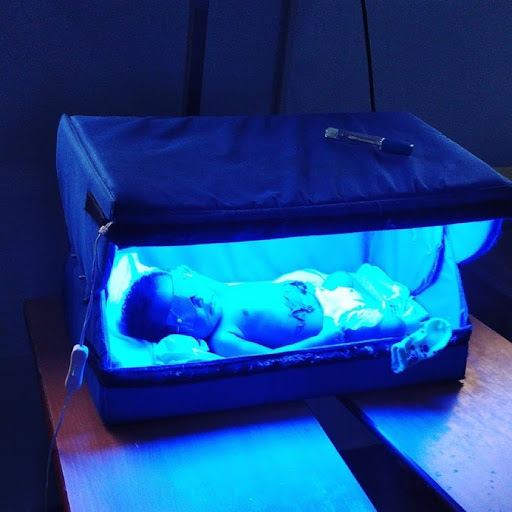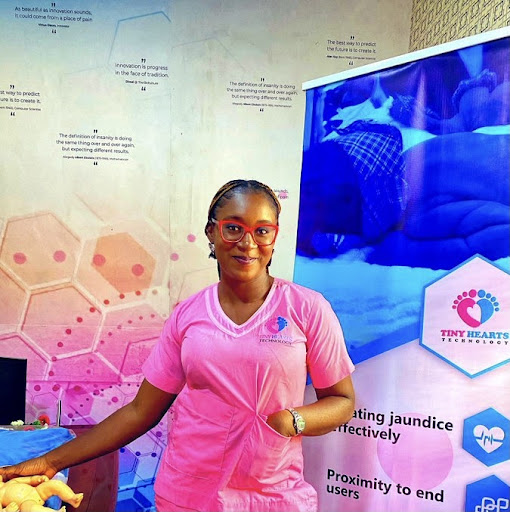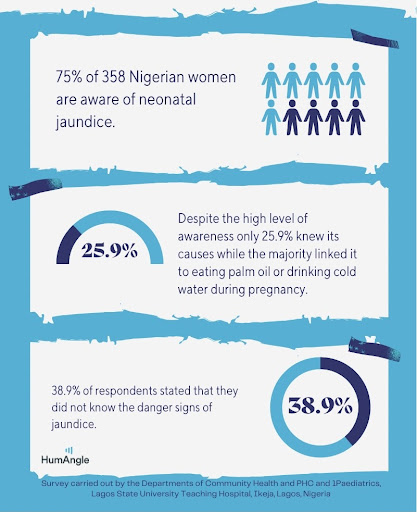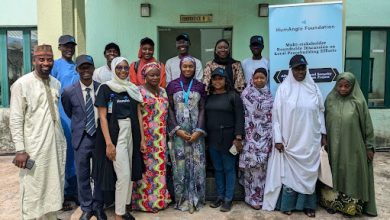Solar Powered Phototherapy Unit Reducing Neonatal Mortality In Nigeria, Suffers Slow Adoption
Apart from the device’s ability to treat neonatal jaundice faster than conventional phototherapy units, Crib A’glow is portable and allows babies stay close to their mothers while in treatment.

The bliss of motherhood would come to a sudden halt when Kafilat’s obstetrician brings news of high levels of bilirubin being present in her baby’s body. This meant that her newborn had shown signs of neonatal jaundice which is a common ailment that affects three in five babies at birth.
“I just wanted to have my baby after he was born but the doctor told me they were running some tests and I should be patient,” she told HumAngle. It was her third child but the first to be diagnosed with neonatal jaundice.
As an unfamiliar experience for Kafilat, doctors had to explain to her that the yellowing in her baby’s skin was abnormal and this could be dangerous if left untreated. It could lead to brain damage, deafness, or cerebral palsy.
Her dismay would further be heightened when the hospital informed her and her family that phototherapy units used for treating such jaundice are all in use and would not be available for days.
Neonatal jaundice, which is commonly caused by liver problems or the lack of compatibility between a mother and baby’s blood type, accounts for 25 per cent of infant mortality in Nigeria.
Kafilat quickly put a call to a friend who had previously used Crib A’glow, a compact phototherapy unit developed by Tiny Heart Technologies, and one was sent to her at Federal Medical Centre in Yenagoa, South-south of Nigeria where she gave birth to the baby.

Developed by a couple who had faced similar ordeal, this phototherapy unit is powered by solar energy and uses blue LED light components which are more penetrative and less dehydrating for babies.
Its compact nature also allows mothers to be close to their babies during treatment rather than the newborn being in the neonatal ward.
Oboro Virtue is the brain behind this innovation. She explained that the device is made in this portable way to allow mother-baby bonding. “It can also be taken home if the doctors recommend so the mothers are not tied to being admitted just because of their babies.”
Virtue’s experience
Differing from Kafilat’s experience, Virtue gave birth to her son and was discharged that very day. “My vitals were checked and they [the doctors] said I was strong enough to go home as well as the baby.”
She explained that “about 48 hours later his eyes were very yellow, which meant his eyes were mildly yellow even at the hospital but because we were quickly discharged it was not noticed in the hospital.”
It was Virtue’s mother that noticed it first before Virtue understood it was neonatal jaundice and it could have severe consequences on her newborn.
As a new mother, she stated that her baby being diagnosed with jaundice was not how she pictured the beginning of her motherhood journey, and upon taking her son back to the hospital there were unavailable phototherapy units as is in most cases.
When Virtue and her husband finally got access to one that was not in use, power outages kept interrupting the treatment process. All these mishaps were what the couple put into consideration when developing the Crib A’glow.
Before embarking on this path of her life, Virtue was a visual creator that did graphics designing and never dreamt of being a medical innovator.
Within two months after the birth of their son, they started creating a solar-powered phototherapy device. “My husband was the major technician while I focused on the functioning and the aesthetics of the unit,” she said.

Virtue admitted that during their first testing the prototype was ugly and not functional, and at the time it felt like they had come to a roadblock. It was later they engaged a pediatrician, a biomedical engineer, and a mechanical engineer.
“We realised that this was not something we could do on our own; we needed others to give us input to improve functionality, especially mothers with whom we also engaged.”
After six prototype testing – of which only four were recorded – the couple were able to successfully launch Crib A’glow as a solution to neonatal jaundice with the approval of the National Agency for Food and Drug Administration and Control (NAFDAC).
Uncertainty from medical executives
Virtue’s career shift from graphics designing to inventing a medical device that effectively solves a common health problem may have given her recognition and won her international and local awards but this did not shield her invention from medical executives’ skepticism.
Not being an engineer or a medical doctor are some of the reasons given by medical executives who have rejected the Crib A’glow phototherapy unit. But Virtue posits that many show a lack of confidence because it is a homegrown product.
Virtue recounts an incident where a baby needed phototherapy treatment but the hospital’s device was faulty. “The patient sent us a picture of the unit that was available and we noticed that the light was neither trapped nor focusing on the baby, plus it was really dim.”
Apart from selling units of the device to accredited hospitals, Tiny Hearts Technology provides the option of renting out for N20,000 per session (from the beginning to end of treatment.)
She advised the patient to ask the hospital to rent the Crib A’glow unit but that suggestion was immediately met with a refusal. Instead, “They kept doing exchange blood transfer on the baby, which is usually a long and painful process,” she said.
“We eventually sent a unit straight to the hospital because the patient was becoming frustrated, and the hospital received the unit but refused to use it for that baby.”
Virtue said that it was a form of resistance and denial that a ‘Made in Nigeria’ device was also as viable as the conventional fluorescent-based phototherapy unit.

The reluctance in using home grown devices comes from lack of feasibility report to prove its quality, and the creativity that considers the pediatric age group especially in the neonatal section.
This was made known by Dr Ridwan Jega, a consulting pediatrician at the Usmanu Danfodiyo University Teaching Hospital. “I have no biases in using made in Nigeria devices as long as they are tested and functional.”
He said the problem, when it comes to Nigerian medical manufacturers, is that they are not into creating pediatric equipment and so medical executives tend to procure imported machines.
Jega has used another homegrown phototherapy device in the hospital he works at. He explained that it was invented by a biomedical engineer and a study was conducted in different health centres to prove it had good quality control.
“Probably that is where the difference lies, as long as a research has been done to back it up we welcome such devices because they are even cheaper.”
Dr Zainab Yaro, the medical director of a pediatrics clinic, had the same opinion. She stated that if devices were not invented specifically for pediatrics it was hard to find ones that are pediatric oriented.
She said that it was only recently she heard about Crib A’glow and, although she hasn’t used one in her clinic, she relayed that it is progressive due to its solar energy component.
Virtue has also admitted that a lot of Nigerian-made devices do not carry out studies or tests, and are pushed straight to the market, which can create skepticism around homegrown products.
Nonetheless, the Crib A’glow device has sold 10,500 units across hospitals in Nigeria and leased out over 1,200.
Awareness and common practices towards neonatal jaundice in Nigeria
Virtue, Kafilat, and many other women, educated or not, barely have prior knowledge of neonatal jaundice and what it entails. This has made mothers – in their desperation to see their baby heal – heed to improper methods of treatment.
One of these methods was suggested to Kafilat before she could get a phototherapy unit. “I heard that my baby could get better if I put breastmilk into his eyes,” she said.
According to a community-based survey published by the Nigerian Postgraduate Medical Journal, 75 per cent of the 358 women assessed were aware of neonatal jaundice. Despite the high level of awareness only 25.9 per cent knew its causes, the majority linked it to eating palm oil or drinking cold water during pregnancy.
While 38.9 per cent of respondents stated that they did not know the danger signs of jaundice, 90.4 per cent had the willingness to take the baby to the hospital when they noticed abnormalities but were rather suggestive that they will hang on and observe their child for some days.
Others have resorted to ineffective traditional healing methods such as exposing babies to early morning sunlight or feeding and bathing babies with herbal remedies.

Due to this lack of awareness, Tiny Hearts Technologies also started a project called ‘Yellow Alert’ to educate mothers on neonatal jaundice and essential newborn care, especially in rural communities where maternal health is substandard.
“We also train community health workers and show them how to use the Crib A’glow unit so when a baby is jaundiced they can quickly use it,” Virtue said.
In communities where there are no nearby hospitals, traditional birth attendants are in charge of the unit. Virtue admits that in this case, the sensitization is more profound so the birth attendants do not treat other infections with phototherapy.
“We let them know that if a baby has other infections they should send them to the nearest health center.”
Since its inception in 2016, Crib A’glow has gone through various upgrades but has been consistent in curing jaundice in newborns.
Kafilat, whose son, Fareed, is turning three testified that after the treatment there were no rashes, scars or spots due to the therapy. The device has saved up to 500,000 babies from neonatal jaundice.
Support Our Journalism
There are millions of ordinary people affected by conflict in Africa whose stories are missing in the mainstream media. HumAngle is determined to tell those challenging and under-reported stories, hoping that the people impacted by these conflicts will find the safety and security they deserve.
To ensure that we continue to provide public service coverage, we have a small favour to ask you. We want you to be part of our journalistic endeavour by contributing a token to us.
Your donation will further promote a robust, free, and independent media.
Donate HereStay Closer To The Stories That Matter




